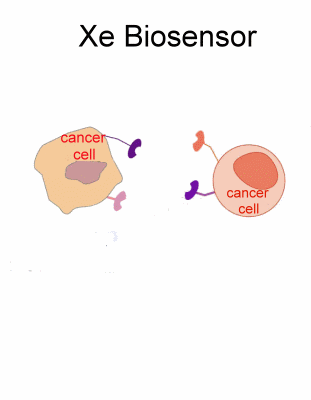

Hyperpolarized Xenon Molecular Sensors and Molecular Imaging

Hyperpolarized 129Xe MRI has emerged in recent years as one of the most powerful methods for molecular imaging with the development of molecular sensors based on xenon. Hyperpolarized 129Xe nuclei offer unprecedented sensitivity enhancement, along with excellent chemical shift sensitivity for detection of molecular events and chemical substances. This offers new possibilities for molecular imaging.
Our lab is developing various 129Xe-cryptophane biosensors targeted to cancer cells, proteins, and ions. We are also developing pH- and temperature-sensitive biosensors for in vivo sensing, thereby expanding the capabilities of Xe biosensors.
Another research direction exploits the rapid and reversible encapsulation of Xe between "bound" (i.e., cryptophane) and "free" (i.e., bulk water) states to report additional information for in vitro and in vivo studies of local chemical environments. Our xenon biosensor developments, which include high detection sensitivity, improve medical diagnostic imaging technology while targeting a broad range of biomedical applications.

Innovation Academy for Precision Measurement Science and Technology, CAS.
West No.30 Xiao Hong Shan, Wuhan 430071 China
Tel:+86-27-8719-8631 Fax:+86-27-8719-9291
Email:hanyeqing@wipm.ac.cn
鄂ICP备15017570号-1